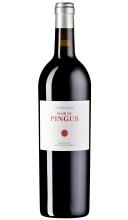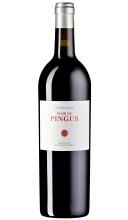Robert M. Parker is a trained lawyer and for almost three decades now has been regarded worldwide as the “wine luminary”. When Parker published the newsletter “The Wine Advocate” in the USA in 1978, nobody thought that this medium would one day be one of the most important wine rating systems in the world. Wine growers, traders and customers, even discounters, listen to his verdict and attract Parker-rated wines. Once a bouteille has been “parked” in the master’s guides and newsletters, the prices go to the ceiling. According to a study by the Paris Institute for Agricultural Research, even the mere mention of a vineyard can cost up to 14 euros more per bottle in the wholesale trade; at the point of sale that’s quickly 30 euros. His wine evaluations with the numerical Parker points are an internationally decisive factor for price formation on the wine market. He uses a 100-point system, with 100 points being the highest score. American wine merchants, for example, not only award their wines with the price, but also with Parker’s rating of “93 PP” (Parker points).
Initially a completely blank page in the wine scene, Robert Parker points quickly rose to become the most important system. The lawyer turned his hobby into his dream profession and has been working as a wine journalist for over 30 years. The Wine Advocate” still features the much-acclaimed points, as do his books “Parker’s Wine Guide” and “Bordeaux”. In addition, he regularly publishes in various wine and pleasure magazines in France, the USA and England. At the end of 2012, Parker sold his “Wine Advocate” to three Asian investors for 15 million US dollars. Parker also withdrew from the editorial board. The “Master of Wine” Lisa Perrotti-Brown, who is based in Singapore, became the new editor-in-chief.
Parker Points (PP) – The 100 Points System
Based on the American school grading system, Parker has been awarding ratings and reviews of wines from all over the world since 1978. Wines are usually tasted in the blind test in comparison groups. Each wine receives a basic score of 50 points, to which Parker adds up to 50 additional points depending on quality. The Parker 100-point rating system is now considered a relevant factor in wine quality perception and pricing. It is also easy to understand and transparent. In some regions, Parker points are even shown on the label of the bottles for advertising purposes.
- 96 – 100 Robert Parker points: extraordinary
- 90 – 95 Robert Parker points: excellent
- 80 – 89 Robert Parker points: above average to very good
- 70 – 79 Robert Parker points: average
- 50 – 69 Robert Parker points: poor to below average
The wines to which Robert Parker attributes special potential during the storage period still receive a plus sign (+). The evaluation by Robert Parker points has become so important over time that wines that receive 90 points or more often experience price jumps of over 100%. A question mark (?) marks wines for which Parker is unsure whether these wines were found to be in the right condition, may develop slightly incorrectly or something similar. In general, it can be said that a score of more than 90 points is equivalent to a knighthood.
How many 100-point wines are there?
The legendary 100 points will only be awarded for exceptional wines. 100 Parker points are wines without exception with intense colour worlds and a clear appearance. Bouquet and aroma exude clear lines of diverse, intense olfactory dimensions and promise purity in the wine itself. The taste develops intense clear aromas, a complexity on the palate and balanced purity in depth and length. A 100 Parker points wine has an exceptional quality and has great potential for future positive development and improvement through its maturation. Wines of this calibre are something very special: rare, valuable and difficult to produce.
There are now countless 100 points of wines listed by Parker under this link.
Italy’s most famous wine – 1985 Sassicaia
Sassicaia 1985 is the most important Italian wine of the past decades. It was also the first in the country to receive 100 points from Parker. The importance of this rating can hardly be overestimated. A masterpiece of elegance, finesse and balance with ultra-fine fruit and an endless, fascinating finish. An emotional experience.
1985 is known as “Annus mirabilis” – a “miracle year”. It was a hot, dry year that had yielded little but healthy grapes. The berry skins were so thick that mash fermentation had to be extended to 15 days to extract all the polyphenols. The wine was then aged for 22 months in barriques, partly in French and partly in Slovenian oak. You can’t taste the wood today.

2017
Sassicaia
Tenuta San Guido
- Toscana
CHF 255.00

2013
Sassicaia
Tenuta San Guido
- Toscana
CHF 275.00

2014
Sassicaia
Tenuta San Guido
- Toscana
CHF 265.00

2015
Sassicaia
Tenuta San Guido
- Toscana
CHF 340.00

2019
Sassicaia
Tenuta San Guido
- Toscana
CHF 265.00

1999
Sassicaia
Tenuta San Guido
- Toscana
CHF 295.00

1998
Sassicaia
Tenuta San Guido
- Toscana
CHF 415.00

2016
Sassicaia
Tenuta San Guido
- Toscana
CHF 430.00

2012
Sassicaia
Tenuta San Guido
- Toscana
CHF 265.00

2010
Sassicaia
Tenuta San Guido
- Toscana
CHF 315.00

1995
Sassicaia
Tenuta San Guido
- Toscana
CHF 365.00

1997
Sassicaia
Tenuta San Guido
- Toscana
CHF 380.00

2004
Sassicaia
Tenuta San Guido
- Toscana
CHF 445.00

2003
Sassicaia
Tenuta San Guido
- Toscana
CHF 295.00
Dominio de Pingus – Pingus wines are great wines
Peter Sisseck is Pingus – Pingus is made from the combination of very special grapes from different parcels of Tinto Fino. These highly esteemed vineyards are located 30 km from Roa, Spain. The years 1996, 2000, 2001 and 2003 were the first big harvests of Pingus, up to the extraordinary one of the year 2004. Here he received the first 100 points of the Robert Parker evaluation. But in general, all Pingus wines are great wines, characterized by their intensity, fineness, suppleness and fullness on the palate, by their good structure and shelf life.

2015
Flor de Pingus
Special size 1,5 Liter
Dominio de Pingus
- Ribera del Duero
CHF 285.00

2014
Pingus
Dominio de Pingus
- Ribera del Duero
CHF 1’250.00

2015
Pingus
Dominio de Pingus
- Ribera del Duero
CHF 1’075.00
 Sold out
Sold out
2010
Flor de Pingus
Dominio de Pingus
- Ribera del Duero
CHF 155.00

2014
Flor de Pingus
Dominio de Pingus
- Ribera del Duero
CHF 115.00

2015
Flor de Pingus
Dominio de Pingus
- Ribera del Duero
CHF 115.00
 Sold out
Sold out
2016
Flor de Pingus
Dominio de Pingus
- Ribera del Duero
CHF 112.00

2014
Pingus
Special size 1,5 Liter
Dominio de Pingus
- Ribera del Duero
CHF 2’520.00

